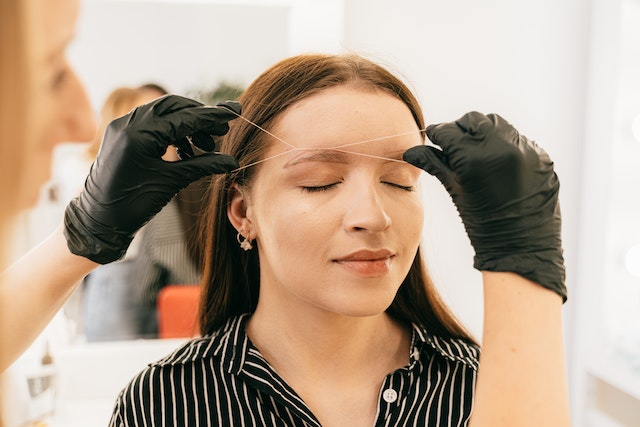Threading and tweezing are two popular hair removal methods, particularly for shaping and grooming eyebrows. Threading involves using a cotton thread to swiftly remove lines of hair at once, while tweezing involves tweezers to pluck individual hairs.
Key Takeaways
- Threading is a speedy hair removal process that removes lines of hair at once, while tweezing is slower and involves plucking one hair at a time.
- Threading is highly precise and can target fine and short hairs, while tweezing may be challenging with short hairs.
- Threading generally causes low pain levels and may cause mild discomfort, whereas tweezing can cause some pain, depending on tolerance.
What is Threading?
Threading uses a cotton thread twisted and maneuvered to loop around individual hairs, swiftly pulling them out from the root. This method is commonly used to shape eyebrows and remove unwanted hair from various areas of the face. With the assistance of a skilled professional, threading allows for the rapid and efficient removal of hair in neat lines, considerably speeding up the process. Threading is a hair removal technique that has been in use for many decades.
While some people may experience slight discomfort, irritation, or redness, threading is generally considered a low-pain hair removal method. The gentle nature of the soft cotton thread eliminates the need for harsh chemicals typically used in other methods, making threading a preferable option for those with sensitive skin.
Threading offers several advantages when it comes to brow shaping. It can effectively target even the finest hairs that tweezing may miss. However, there is a possibility that the hair may break at the surface rather than being entirely uprooted, which could lead to shorter intervals between threading sessions. On average, you can expect to visit your local salon for threading every four weeks. Some people may choose to supplement this by tweezing their brows between sessions to help maintain their desired shape.
What is Tweezing?
Tweezing is a popular method of grooming and shaping eyebrows to achieve a more defined and polished look. It uses tweezers, a small tool with two opposing arms, for plucking individual eyebrow hairs from the root. Tweezing can initially cause some discomfort, but as you continue the process over time, your tolerance will increase, and the pain will diminish. This is because repeated tweezing weakens the hair follicles, making it easier to extract hairs.
To begin tweezing your eyebrows, having the right tools is essential. Slanted tweezers are generally recommended as they provide better control and grip on the hair. Additionally, it’s advisable to have good lighting and a magnifying mirror to ensure you can see the fine details of your eyebrows clearly.
What is the Difference Between Threading and Tweezing?
Threading is a hair removal technique that uses a cotton thread to loop to pull out hairs, whereas tweezing is a hair removal technique that uses slanted tweezers to pluck individual hairs. Threading is a quick process, with lines of hair removed at once, whereas tweezing is a slower process, with one hair plucked at a time. Thus, this is the key difference between threading and tweezing. Threading is highly precise and can target fine and short hairs. While tweezing is precise, it may be challenging with short hairs. Moreover, threading generally causes low pain levels and may cause mild discomfort, but tweezing can cause some pain, depending on tolerance.
Summary – Threading vs Tweezing
Threading involves using a cotton thread to swiftly remove lines of hair at once, while tweezing involves using tweezers to pluck individual hairs. The key difference between threading and tweezing is that threading offers a speedy hair removal process, where lines of hair are removed all at once, while tweezing is a slower process, as it involves plucking one hair at a time.
